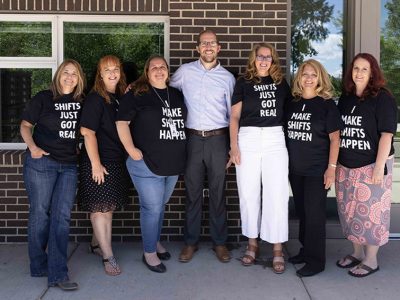Health and housing are inextricably linked.
“If you’re looking for a single indicator for wellbeing, homelessness could actually tell you a lot about how a community is organized to support its most vulnerable residents, to optimize its resources, and to have a holistic view of health,” said Rosanne Haggerty, President of Community Solutions.
On a U.S. News & World Report panel called The Connection Between Housing and Health: Measuring Community Impact, Haggerty joined experts on housing and health to discuss why ending homelessness is a health care issue.
Homelessness tells us how well our systems are serving the needs of populations who are often the most marginalized. The solution to homelessness lies in changing these systems to better serve these groups.
“We, as a society, built this mess,” said Deena Chisholm, another panelist at Thursday’s event. Chisholm is the Director of the Center for Child Health Equity and Outcomes Research at the Nationwide Children’s Hospital. “We, as a society, also have the responsibility to unbuild this mess.”
Using data to drive better health and housing outcomes
Community Solutions’ Built for Zero movement is made up of more than 80 communities around the country all working to end homelessness at the population level, using an equitable, public health approach.
In Built for Zero communities across the U.S., the critical first step to measurably ending homelessness is achieving quality, real-time data on everyone experiencing homelessness in a community. This part of the methodology actually stems from the health care industry, where comprehensive data on a patient’s health status is collected and shared between health care systems even if the patient happens to move from one city to another.
Keeping up-to-date data on who is experiencing homelessness in a community better equips local leaders to solve it.
“You go from this amorphous picture of this issue that is perceived as so overwhelming, to a picture that is really actionable,” Haggerty said.
This kind of data is crucial during the pandemic. It allows communities to rapidly identify and connect people to housing, quarantine facilities, and other supports. Collecting data can also identify and address disparities being perpetuated by systems and is a necessary step to addressing homelessness.
“Equity challenges us to think: how do we deliver housing to people who have greater challenges?” said panelist Richard Cho, Senior Advisor for Housing and Services at the U.S. Department Housing and Urban Development. “This idea of a rising tide lifts all boats doesn’t work when people have holes in those boats and are sinking,”
How health care systems are working to help communities end chronic homelessness
“There’s a lot of important work being done with this notion of bringing together health care and housing around a shared and defined aim,” Haggerty said.
Community Solutions and the Institute for Healthcare Improvement are leading an initiative exploring how health care systems can help communities end chronic homelessness.
Through this initiative five Built for Zero communities are partnering with health care systems, including Kaiser Permanente:
- Bakersfield/Kern County, California – Kaiser Permanente, CommonSpirit Health
- Washington County, Oregon – Kaiser Permanente
- Sacramento County, California – Kaiser Permanente, CommonSpirit Health, University of California – Davis Health, Sutter Health
- Anchorage, Alaska – Providence St. Joseph Health
- Chattanooga, Tennessee – CommonSpirit Health
The health system in each community will focus on improving population-level outcomes for people facing chronic homelessness, including: driving reductions in homelessness, lowering health care costs, and improving population health.
Reaching functional zero — a measurable of ending homelessness for a population — stands to benefit entire communities, beyond just the homeless response system. Recently, the Urban Institute published research exploring the value of reaching functional zero to communities.
The research found that demand for health care, fire, and rescue services decreased in communities that had reached functional zero for a population. It also proved that homelessness is a systems problem, and cross-sector accountability is necessary to reduce inflow into homelessness.
“We’re just about to embark on launching these medical and legal partnerships. Once you’re able to kind of have that conversation with patients, you can identify all sorts of other issues that may require support of this nature — but creating the systems and the infrastructure for it is the key,” said panelist John Vu, Vice President at Kaiser Permanente.




